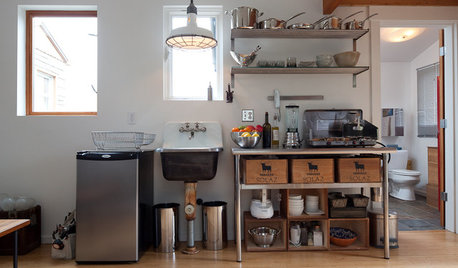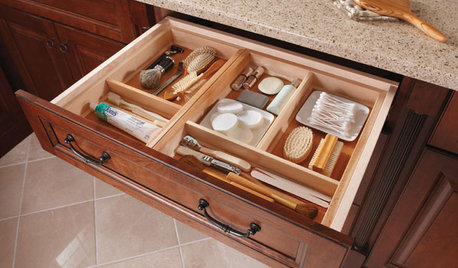sodding tomorrow..want to go totally organic
lemonpeels
16 years ago
Related Stories

EVENTSWho Will Create the Iconic Furniture of Tomorrow?
Promising design talent gets the spotlight in a San Francisco exhibition. Take a peek here
Full Story
GARDENING GUIDESHow to Plant a New Lawn From Sod
Take the quick-start route to turf with sod; these installation guidelines will help ensure a healthy and long-lasting lawn
Full Story
SAVING WATERHouzz Call: Are You Letting Go of Your Lawn?
Many facing a drought are swapping turf for less thirsty plantings. If you’re one of them, we’d like to hear about it
Full Story
REMODELING GUIDESShould You Stay or Should You Go for a Remodel? 10 Points to Ponder
Consider these renovation realities to help you decide whether to budget for temporary housing
Full Story
DECORATING GUIDESEdit Keepsakes With Confidence — What to Let Go and What to Keep
If mementos are weighing you down more than bringing you joy, here's how to lighten your load with no regrets
Full Story
WORKING WITH PROSGo Beyond the Basics When Interviewing Architects
Before you invest all that money and time, make sure you and your architect are well matched beyond the obvious levels
Full Story
HOUSEKEEPING7-Day Plan: Get a Spotless, Beautifully Organized Living Room
A task a day sends messes away. Take a week to get your living room in shape
Full Story
GARDENING GUIDESHow to Prep Your Ground for a Healthy New Lawn
Seed or sod that falls on weedy, lumpy soil is a wasted effort. Follow these steps to ensure that your new lawn will thrive
Full Story
MOST POPULARHow to Create an Inventory, Whether You're Naturally Organized or Not
Documenting your home items is essential, even if disaster seems unimaginable. And it may be easier than you think
Full Story
HOLIDAYSChristmas Cleanup Tips for the Not Naturally Organized
Dreading the postholiday chores? First let yourself unwind. Then grab some boxes, a few supplies and this easy guide
Full Story





bpgreen
skoot_cat
Related Professionals
Deer Park Landscape Architects & Landscape Designers · Pelham Landscape Contractors · Allentown Landscape Contractors · Cornelius Landscape Contractors · Harvey Landscape Contractors · Kearny Landscape Contractors · North Plainfield Landscape Contractors · Northport Landscape Contractors · Richmond Landscape Contractors · Yuba City Landscape Contractors · Chicago Ridge Landscape Contractors · Norridge Landscape Contractors · Chattanooga Driveway Installation & Maintenance · Fairmount Fence Contractors · Saint Louis Park Fence Contractorsdchall_san_antonio
vintageways
dchall_san_antonio
lemonpeelsOriginal Author
fescue_planter
dchall_san_antonio
gardengal48 (PNW Z8/9)
bpgreen
dchall_san_antonio
lemonpeelsOriginal Author
rcnaylor
vintageways
morpheuspa (6B/7A, E. PA)